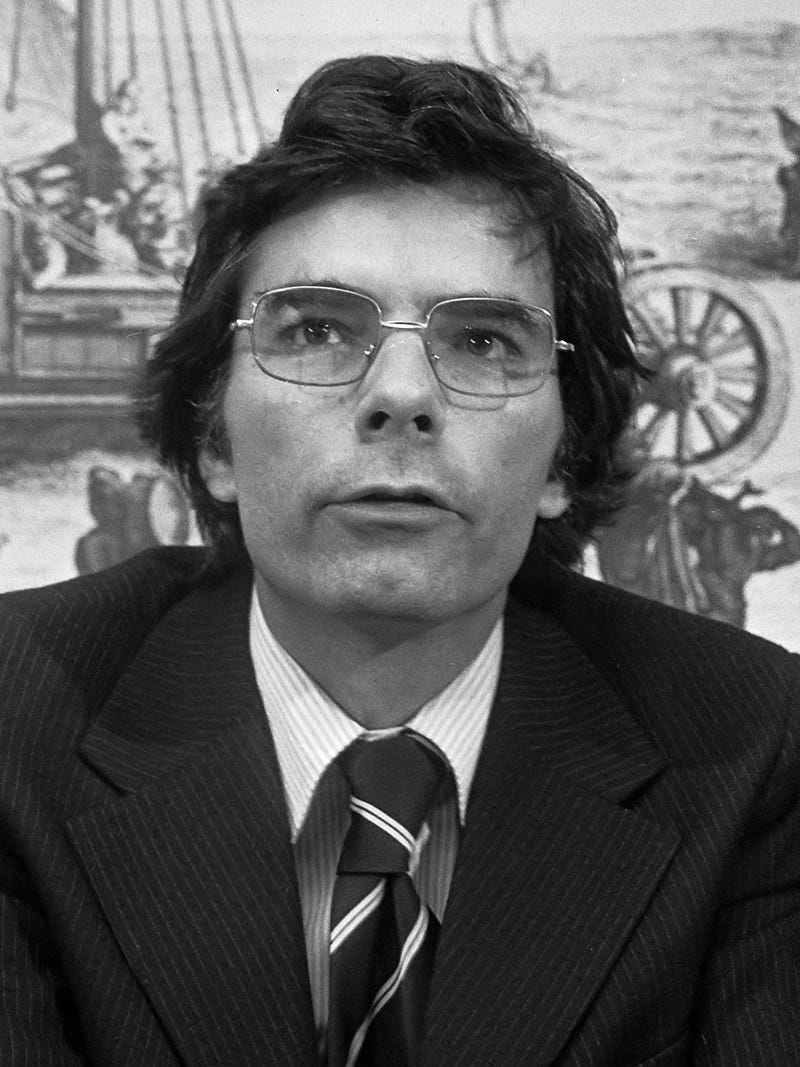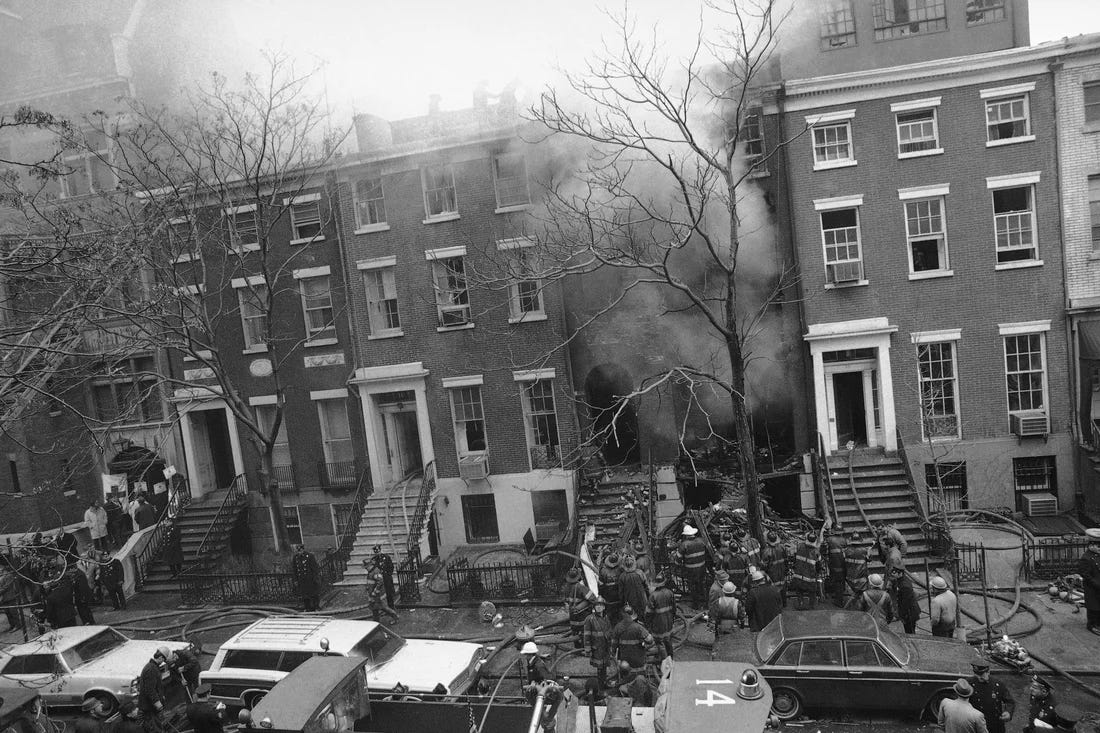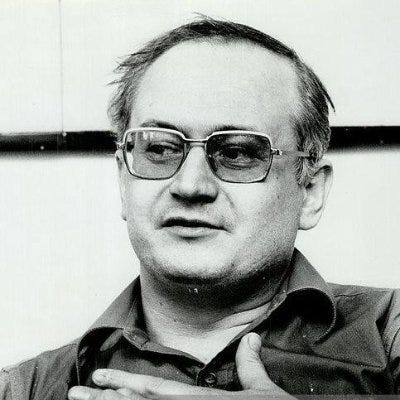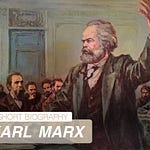Part 3 of a three part series on communist activity in America during the 20th Century.
This transition from the streets to the institutions was partially accelerated by public outcry in the late 60s. Members of the public were increasingly fed up with the proclivity of left-wing organisations to promote violently behaviour. Of course, this was merely the outward manifestation of their beliefs. Such an exemplary case of this insanity was documented by an undercover activist…
In 1969, Larry Grathwohl joined the Weather Underground - a far left organisation - as an undercover agent for law enforcement. He would later reveal that - after rising through the ranks - he was given the task of taking directives and documents from the communist international central committee and transferring them to various cities in which cells of the weather underground were operating. He believed that the international was exerting control into the Americas through Cuba at this point. It is worth noting that legal assistance to these radical groups was often provided by members of the National Lawyers Guild, which was well known at the time to be associated with the Soviet Union as an ideological outpost in America. These lawyers supported several violent groups, including the Weather Underground, the Panthers, the Puerto Rican FALN - a terrorist organisation.
One group from within the lawyer’s guild - Rabinowitz, Boudin & Standard - was particularly pro revolutionary. Leonard Boudin - the head - was the father of Weather Underground leader Kathy Boudin, whilst Victor Rabinowitz was shown to be a member of the communist party. Their law firm was an official agent of Cuba in US courts at the time.
During this period the United States - under domestic pressure - also pulled out of Vietnam, handing that region over to the communists. This is another noteworthy moment, as highlighted by Thomas Sowell. The media portrayed the US position in the war as one of continuous defeat and retreat, yet, the US won every major battle in the Vietnam war. In fact, communist forces admitted after the war ended that the surprise Tet offensive in 1968 - which was widely reported in western media - was a shocking defeat militarily. The Viet Cong was virtually annihilated during the offensive, and responsibility was now on the North Vietnamese Army. Yet, in the ideological sense, the communists were victorious. In America, thanks to Walter Cronkite, the media reported that the American forces were being massacred, and that the situation in Vietnam was unwinnable. This had a huge impact on American morale. The Vietnamese communists would later admit that they often cared more about what was happening on the streets of New York, rather than on the battlefield, for they knew that the war would be won or lost based on what happened in America.
In 1974, following the Watergate scandal, a new campaign was taken up against the House Committee for Un American Activities - which had now been renamed.
Thus, congressional investigative committees were essentially abolished. The only one remaining was the Senate Internal Security Sub Committee, which was under the Senate Judiciary Committee. Shortly after, in March 1977, this subcommittee was abolished, following a successful campaign by senator Ted Kennedy to cut all funding. Thus marked the end of such committees in America.
In 1975 Barry Goldsmith admitted that communist infiltration had been successful within congress was strong. It is still not known who gave orders to the vice president not the reveal this information, but it is clear that he was receiving orders from someone above. That same year, the justice department itself would come under the control of Edward Levi, a member of the American Lawyers Guild, who redirected much of the departments attention from actual concerns to battling against groups seeking better internal security. Immediately he - backed by both the lawyer’s guild and ACLU - enacted a new restriction on the FBI; they could only investigate an individual or organisation unless proof already existed that they were planning a criminal act. Shortly after, this rule became even more absurd; the FBI could only investigate if the crime was to be committed within the next 48 hours. This was certainly deliberate, as it was well known that most successful FBI raids, counterintelligence, and counterterrorist operations were the result of months of investigation and observation. By removing this ability, the organisation cannot properly function against threats. In fact, from 1973 to 1979, the number of internal security threats being tracked by the FBI dropped from 21,000 to 147. The number of FBI agents in counterintelligence and internal security also dropped to a mere 143. For context, during this period it was calculated that roughly 2,000 KGB agents were operating in the US.
Throughout the 1970s, Philip Agee - a former CIA agent - had been publishing the names and addresses of CIA agent’s abroad who were anti-communist. Many of these agents were targeted for assassination, and one was killed. One of the agents responsible for this was Czech Soviet agent Vladislov Dittman, who later defected. Over 900 of the most experienced security personnel in the CIA would later be fired by Stansfield Turner - who was appointed head by President Carter. Thus, the agency was further reduced in efficiency, experience, and morale. It was now at the whims of those who had for so long been slowly climbing through the ranks. This likely played a part in the increasing criticism of right wing or nationalist movements in South America, which at one-point elements of the CIA had backed in order to prevent communist organisations from seizing power.
Morton Halperin was another exemplary figure in the late 1970s. He was head of an anti-security organisation called the Center for National Security Studies, who helped Leonard Boudin provide legal assistance for Philip Agee. Yet before this he had been in the National Security Council, as senior assistant to Henry Kissinger. He personally prepared the famous Pentagon Papers which were secretly released to the press, which further dismantled any legitimacy that the US should be taking part in anti-communist operations.
By the late 70s, with almost all opposition wiped out in the security apparatus, attention was turned towards the FBI. As noted previously, the FBI had managed to retain a relatively good record in contrast to other security centers, and the Justice Department under Edward Levi was hot on their case. It had been at the forefront of investigating potential internal threats and presenting this evidence to the public. Thus, it was necessary to subvert and destroy. Leading the charge was none other than the National Lawyers Guild backed by the ACLU. In 1978, under pressure, the Justice Department indicted Mark Felt - a top member of the FBI - and his assistant Edward Miller, in charge of domestic intelligence. They were accused of such things as entering into the houses of members of the Weather Underground. What was conveniently left out of this was that these entries were used to gain information on terrorists who had been responsible for, and planned to continue, bombings and other terrorist attacks across the country.
It was clear that the FBI was under attack for one reason only: because they remained one of the few organisations capable of stopping ideological incursions into the state. This exact point was ironically made by one of the biggest critics and a prosecutor against the FBI - federal judge William Bryant - when he asked the court jury - before they retired - to ignore everything except one point; did or did not the FBI enter into the houses of communists? In 1980, Felt and Miller were found guilty of violating the constitutional rights of Americans, which costed them over 1 million dollars. This was paid for by FBI agents and friends, who saw through the veneer. Nevertheless, since this time the FBI has steadily been demoralised. It had been forced to destroy over 80 percent of its documents pertaining to internal security threats. In one example, documents and surveillance monitoring of the Puerto Rican terrorist group FALN was stopped, and soon after this same organisation blew up a tavern in a terrorist attack, followed by four other bombs in Manhattan.
With the gates now open, radical leftist organisations could now operate with a higher level of sophistication. In one telling case, in 1979, a number of leftist radicals sued the police for monitoring them. Representing them was attorney Jonathan Moore, form the National Lawyers Guild, and his three partners were all open members of the Weather Underground terrorist organisation. The judge ordered the police to hand over all documents on their monitoring of the FALN group. These documents included analysis of FALN bombing patterns, predictions on future targets, and methods for police to counter the organisation. It even included informants and undercover agents. All of this was directly given over in court to members of the FALN. They now had open access to everything and could counter the police tactics. Copies of these documents were later discovered in a Milwaukee hideout for the FALN.
At the same time came another new set of concepts, broadly referred to as postmodern theory. claiming to be an anti-ideology, postmodern theory was established primarily by former Marxists. Conveniently, despite vehemently denying any connection to revolutionary ideas, many of the postmodern theorists pushed what appeared to be an updated and more nuanced form of critical consciousness; that is, the critique of western society, and the formulation of its alternatives. While postmodern theory itself would affect Europe more than America, its offshoots would play a profound role in the emergence of radical leftism in the 1990s. as with Adorno and Marcuse’s critical theory, the postmodern theories were often oriented around a profound sense of nihilism. one of the key elements of postmodern theory - after all - was the rejection of grand, binding narratives and ideas - such as religion - instead claiming that all truths exist merely as subject and momentary ideas pushed by the ruling class.
Today, postmodern theory is most often associated with names such as Michel Foucault, however, socialist intellectuals Jean Paul Sartre and his partner Simone de Beauvoir were key movers in setting the stage for later postmodern concepts. A rather telling moment came in 1977, when many postmodern thinkers - most notably Foucault, Sartre, Beauvoir, Gilles Deleuze, and Jean Francois Lyotard to name the most prominent - signed petitions advocating for the removal of Frances age of consent laws, claiming that they were discriminatory. They also advocated for the release of anyone imprisoned as a result of violating these laws, including an individual who had violated a six-year-old girl.
The key development from these concepts was known as intersectionality. emerging as a byproduct of both critical theory and postmodern theory, intersectionality attempted to merge social criticism with power dynamics. to do this, it would categorise individuals based on perceived points of oppression or villainy. for example, a woman would be categorised as being part of a victimised group when set next to a man, however if the man is of a different race, while the woman is white, now another dimension has been added. the man has one negative to his name - being a male - but one positive - he is part of a perceived marginalised group - and is in this way a victim. in this same way, the woman is a victim - as she is oppressed by men - but she is also an oppressor - since she is white. Yet still a further category of victimisation can be added, such as sexuality, culture, economic status, and so forth. intersectionality would quickly become one of the most influential ideologies on American college campuses. despite its confusing premise, its goal remained the same; the stratification of society, and the organisation of one or more angered and disenfranchised revolutionary classes. Intesectional theory would rapidly grow in popularity for the 1990s onwards, reaching a peak in recent years.
There are many other neo-Marxist thinkers who helped push this new set of ideologies from the 1970s onwards. However, the list would be exhaustive. The most influential - in terms of the real-world outcome of their ideas - are Herbert Marcuse, Adorno, and Horkheimer with their modernisation of Marxism into Critical Theory, Antonio Gramsci, Paulo Freire, and Gyrogy Lukacs for their theories on education and institutional control, and finally Jean Paul Sartre and Michel Foucault for advancing postmodern critiques on power and structure.
CONCLUSION
A key summary provided by Bezmenov regarded what he called the demoralisation process - or active measures. This four-stage process visualised how neo-Marxist ideas would take hold and eventually destroy a society. In this case, America. The demoralisation process matches up with the theories of Lukacs and his contemporaries, and as Bezmenov noted, it would take many decades for its slow but steady effects to be felt.
As Bezmenov, and indeed many of those with experience in these ideologies, have stated time and again; the goal of revolutionary utopian Marxism, acutalised in such concepts as critical theory, must completely destroy the old in order to establish the new. The nihilistic nature of these theories deliberately attracts those who are prone to emotional manipulation. From here, it can form the idea of victim groups, all of which can be first isolated from others, and then exacerbated to the point of forming a revolutionary class. In the end, of course, no one benefits from this except the intellectuals who seek to advance their own agenda.
These ideologies, once exposed, are hard to ignore. The blatant nihilism and pessimism expressed through such ideologies as Critical Theory are behind destructive. In fact, these ideas have now resulted in a growing divide between the New Left - or those inspired and in agreement with these ideas - and the Old Left - those who still believe in more traditional Marxist views on the working class, the elites, and such.
Bezmenov warned that most people would remain unaware that they were in a state of ideological war. He warned that to defeat the system, people had to educate themselves so as to identify the threats. Only once people have come to an understanding of what is actually going on in the West can change occur, and disaster be averted.



















Share this post